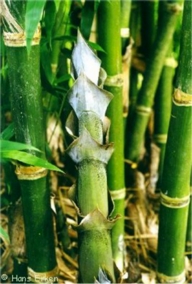Characteristics of Living Organisms
| Philosophy of Science |
While creating a resource page, please click here for a resource creation checklist
Concept Map
Textbook
To add textbook links, please follow these instructions to: (Click to create the subpage)
Additional information
Useful websites
Reference Books
Teaching Outlines
Concept #1 - Organism and its characteristics

There
are common features of organisms:
Learning Objectives
- To observe and record characteristics of living beings (this topic is already introduced in lower classes)
- To develop skills of observation and classification
Notes for teachers
- All organisms reproduce
- There are patterns of responsiveness and behavior
- There are geographic areas in which organisms live
- Organisms try to maintain order through self regulation
An organism is any contiguous living creature which is capable of breathing, response to stimulus, reproduction, excretion, growth and development and maintenance of homeostatis as a stable whole. An organism may be unicellular (single celled) or multi cellular( many cells). The surrounding where the organisms live is called habitat.
Activity 1: Characteristics of Living Beings
- Time Required: 30 Minutes.
- Materials required: Pen and work sheet (Note book).
- Process" - Group work
- Developmental questions - Ask the students to document living organisms
Learning objectives
Notes for teachers
These are short notes that the teacher wants to share about the concept, any locally relevant information, specific instructions on what kind of methodology used and common misconceptions/mistakes.
Activity No #
- Estimated Time
- Materials/ Resources needed
- Prerequisites/Instructions, if any
- Multimedia resources
- Website interactives/ links/ simulations
- Process (How to do the activity)
- Developmental Questions (What discussion questions)
- Evaluation (Questions for assessment of the child)
- Question Corner
Activity No #
- Estimated Time
- Materials/ Resources needed
- Prerequisites/Instructions, if any
- Multimedia resources
- Website interactives/ links/ simulations
- Process (How to do the activity)
- Developmental Questions (What discussion questions)
- Evaluation (Questions for assessment of the child)
- Question Corner
Concept #
Learning objectives
Notes for teachers
These are short notes that the teacher wants to share about the concept, any locally relevant information, specific instructions on what kind of methodology used and common misconceptions/mistakes.
Activity No #
- Estimated Time
- Materials/ Resources needed
- Prerequisites/Instructions, if any
- Multimedia resources
- Website interactives/ links/ simulations
- Process (How to do the activity)
- Developmental Questions (What discussion questions)
- Evaluation (Questions for assessment of the child)
- Question Corner
Activity No #
- Estimated Time
- Materials/ Resources needed
- Prerequisites/Instructions, if any
- Multimedia resources
- Website interactives/ links/ simulations
- Process (How to do the activity)
- Developmental Questions (What discussion questions)
- Evaluation (Questions for assessment of the child)
- Question Corner
Project Ideas
Fun corner
Usage
Create a new page and type {{subst:Science-Content}} to use this template